Cosmic neutrinos and X-rays from space netted this year’s physics Nobel Prize winners their share of the 10 million Swedish Kroner prize (almost £700,000). Half of the prize money was shared between Raymond Davis Jr of the University of Pennsylvania, Philadelphia, USA, and Masatoshi Koshiba of the University of Tokyo, Japan, for their research which plumbed the depths of the earth to detect neutrinos from space. The other half went to Riccardo Giacconi, President of Associated Universities, in Washington DC, USA, who created a new astronomical window of opportunity transparent to X-rays.
The tiny elementary particle known as the neutrino was first predicted in 1930 by Nobel physicist Wolfgang Pauli. He realised an uncharged and massless particle was needed to balance the books in radioactive beta decay. It was another 25 years before its existence was proven by Nobel laureate Frederick Reines and Clyde Cowan. It was realised that if the Sun was powered by nuclear fusion rather than gravity, then it would release neutrinos in unimaginable numbers. However, detecting a particle that passes unnoticed through matter is tough.
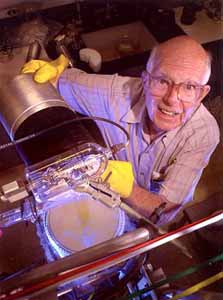
Raymond Davis
Davis installed a gigantic tank of 615 tonnes of dichloromethane at the foot of a mineshaft away from cosmic interference. The chlorine atoms were the key to detecting neutrinos. When a neutrino hits a chlorine atom, radioactive argon is produced. The chance of a collision make winning the lottery look a dead cert but wait long enough and the telltale signs of radioactive argon would ultimately be detected.
Over a period of thirty years Davis’ tank has captured 2000 Solar neutrinos, proving that the Sun is powered by hydrogen fusion.
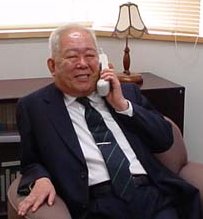
Masatoshi Koshiba
Koshiba subsequently used a similar detector to confirm Davis’ results. He and his colleagues went a step further though. On 23 February 1987, their detector captured twelve neutrinos from a distant supernova explosion. That is a tiny fraction of the 10,000,000,000,000,000 (1016) that passed through the detector.
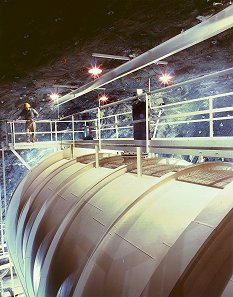
The tank!
The Sun and all other stars emit electromagnetic radiation at different wavelengths, as well as neutrinos. Visible light and ultraviolet have particular wavelength ranges, while X-rays have another. The problem for astronomers on earth is that X-rays are absorbed by the atmosphere; thankfully you might say from a health perspective.
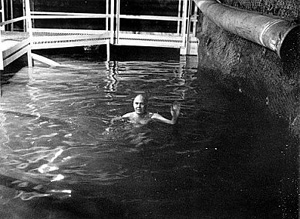
Davis and the tank
To observe cosmic X-ray sources an instrument has to be put into space from where it can send back a signal to astronomers on Earth.
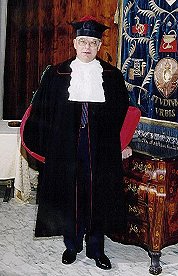
Riccardo Giaccon
Giacconi constructed such an instrument in the 1960s and detected the first source of X-rays outside our Solar system. His findings showed that the Universe has a background radiation of X-rays. He also spotted X-rays coming from regions of space that most astronomers believe contain black holes.
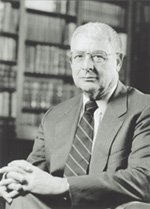
Another look at Riccardo Giacconi
Further reading
Raymond Davis Jr
http://www.bnl.gov/bnlweb/raydavis/research.htm
Riccardo Giacconi
http://physics-astronomy.jhu.edu/people/faculty/giacconi.html
Wolfgang Pauli
http://nobelprize.org/nobel_prizes/physics/laureates/1945/pauli-bio.html
Frederick Reines
http://nobelprize.org/nobel_prizes/physics/laureates/1995/reines-autobio.html
Suggested searches
Nobel prizes
Neutrino detectors
Neutrinos
X-ray astronomy